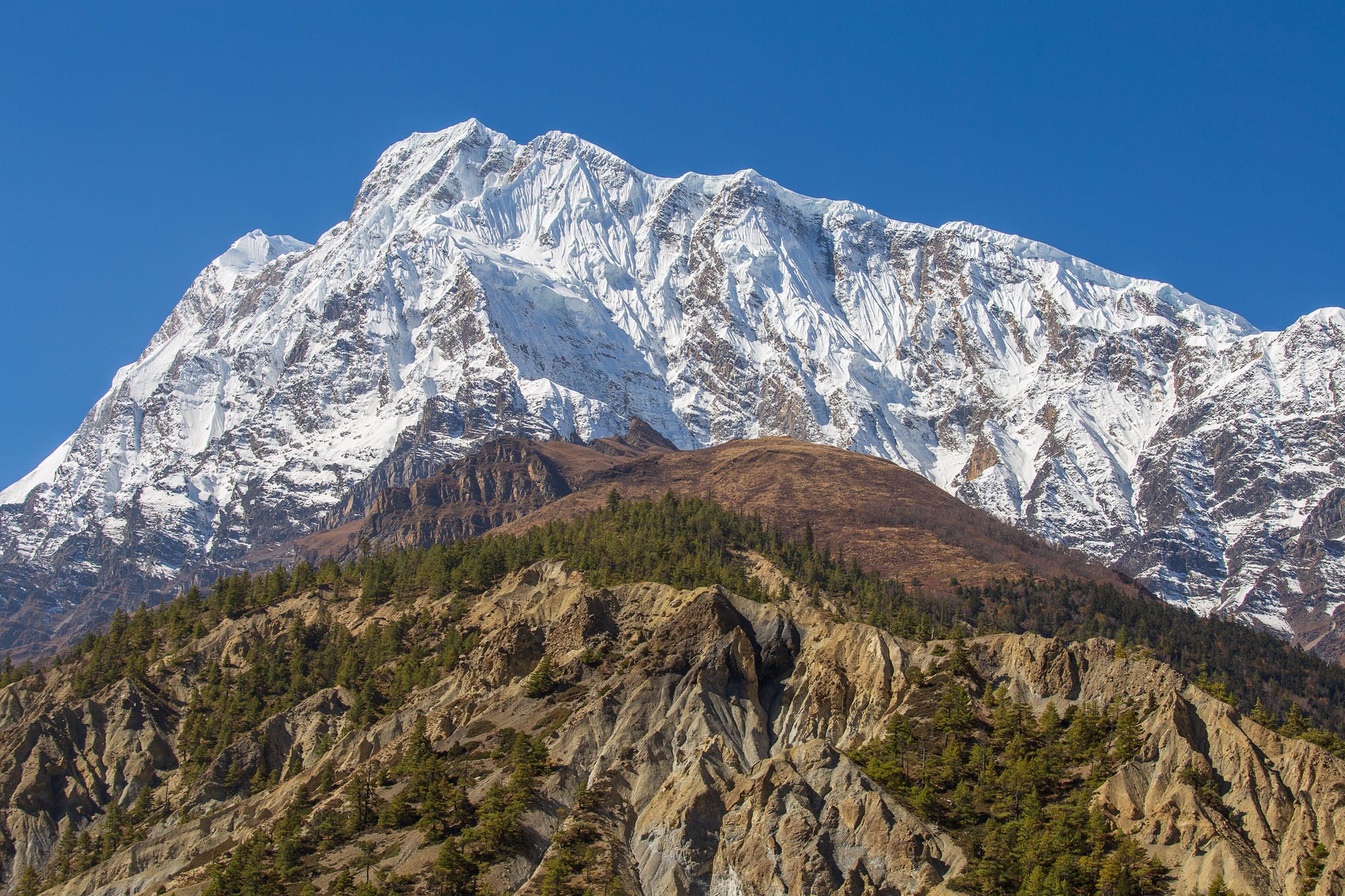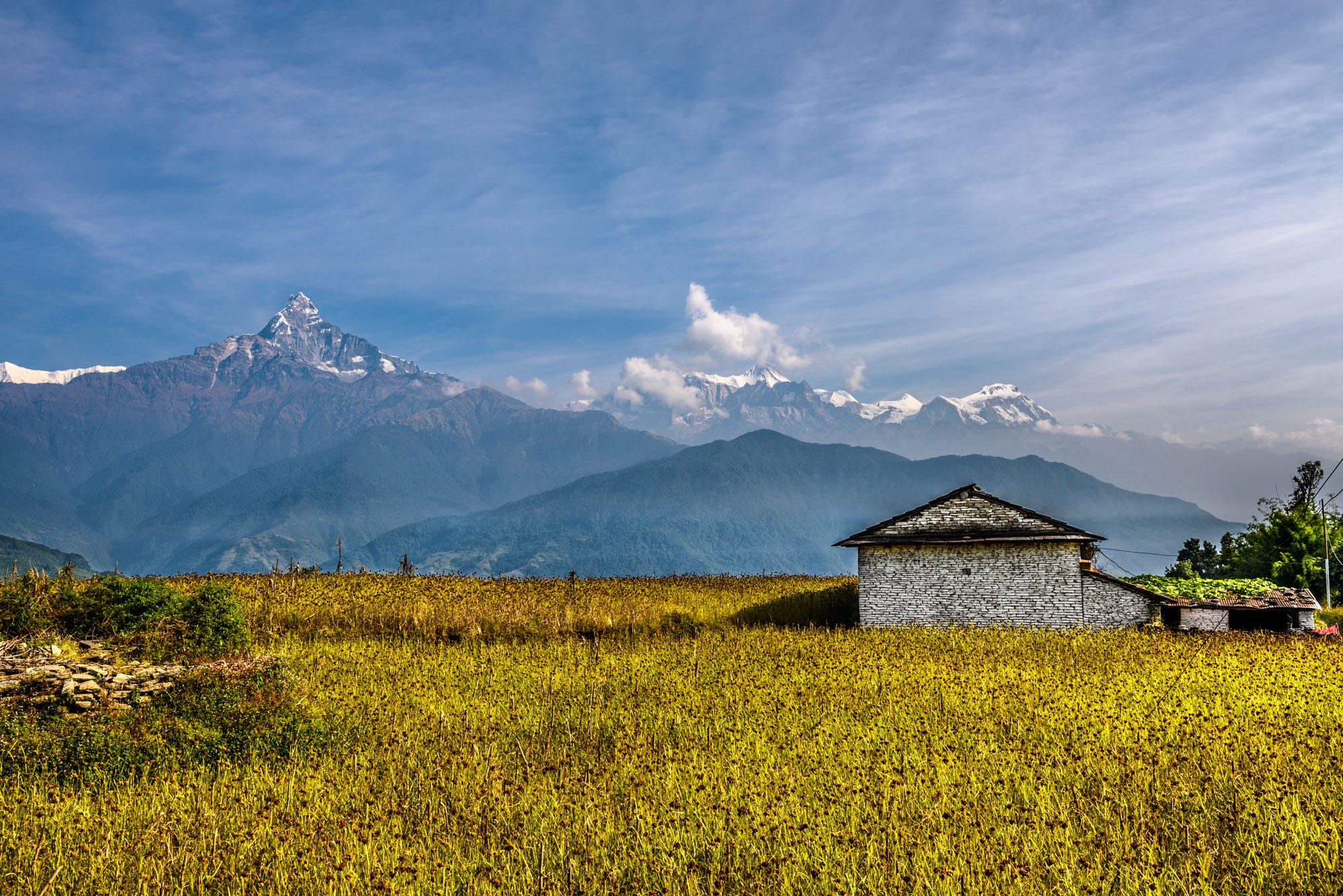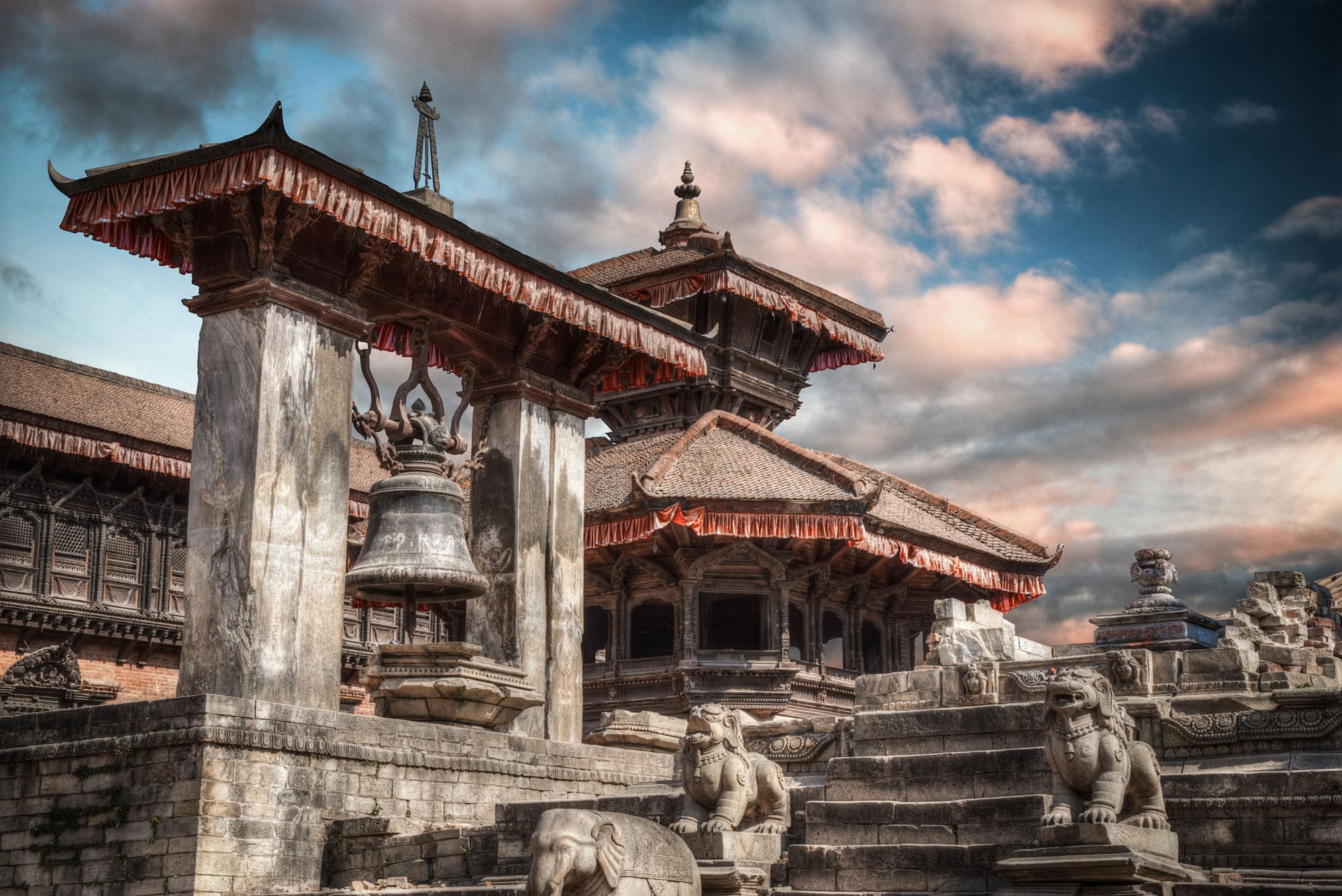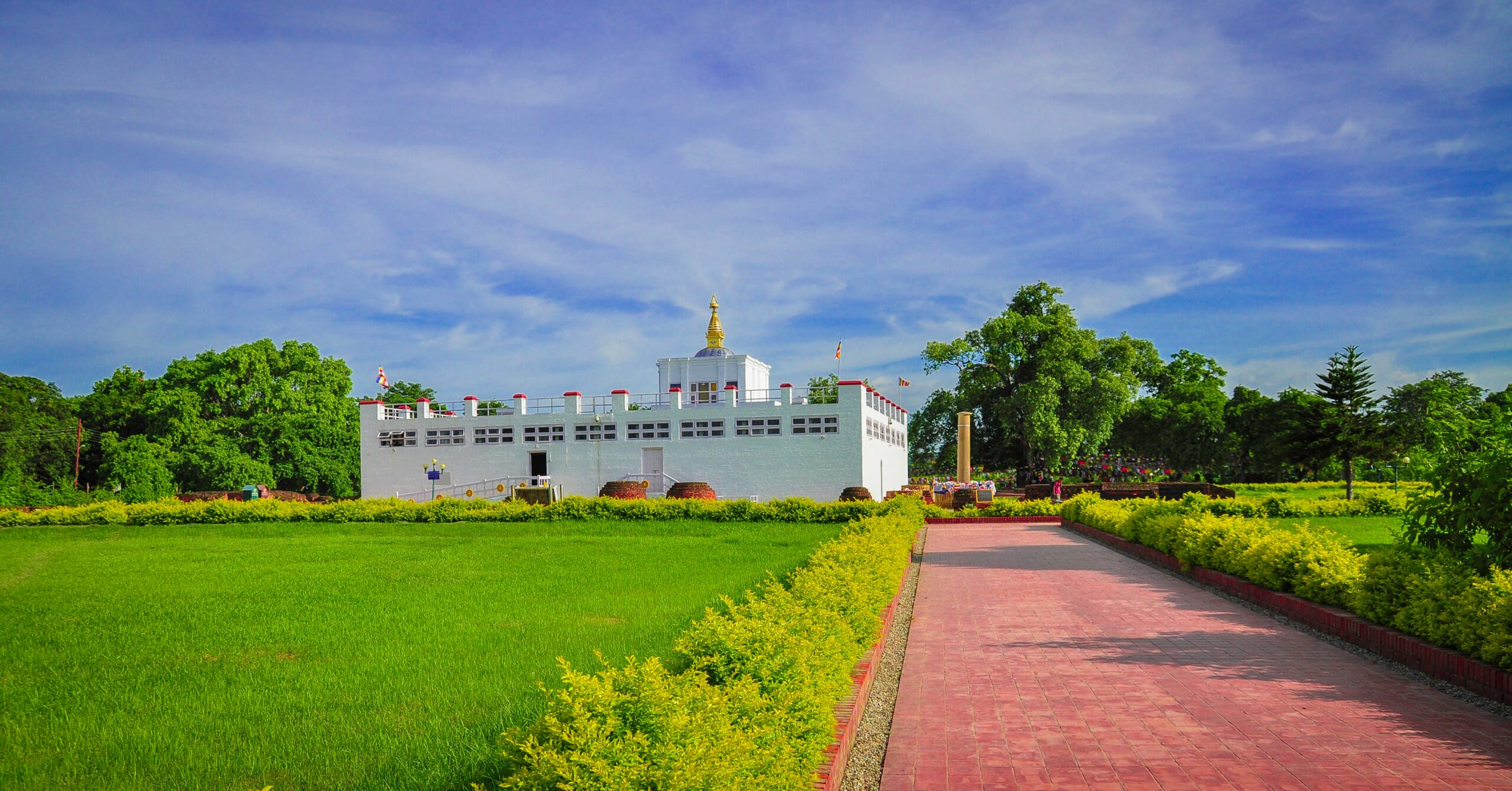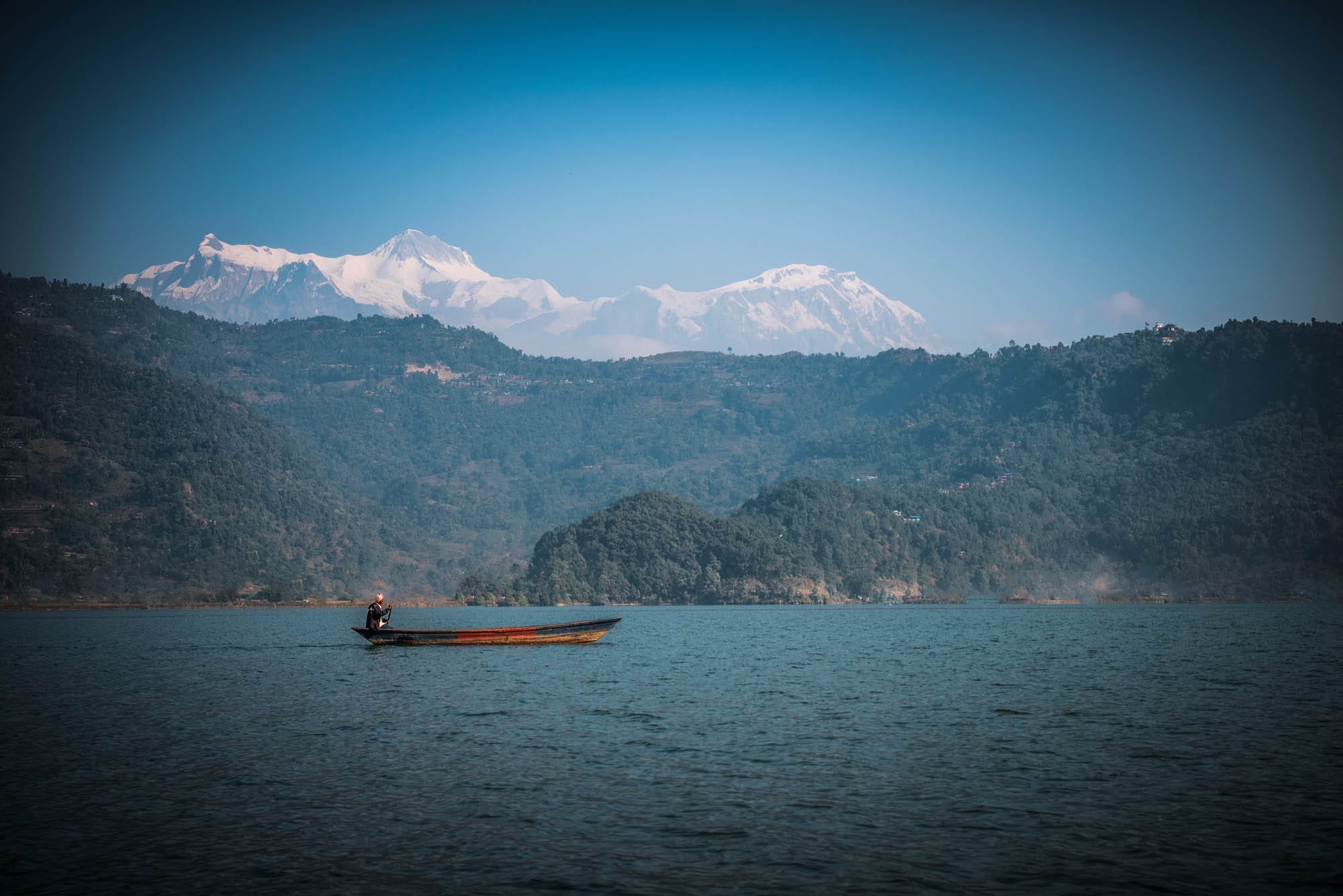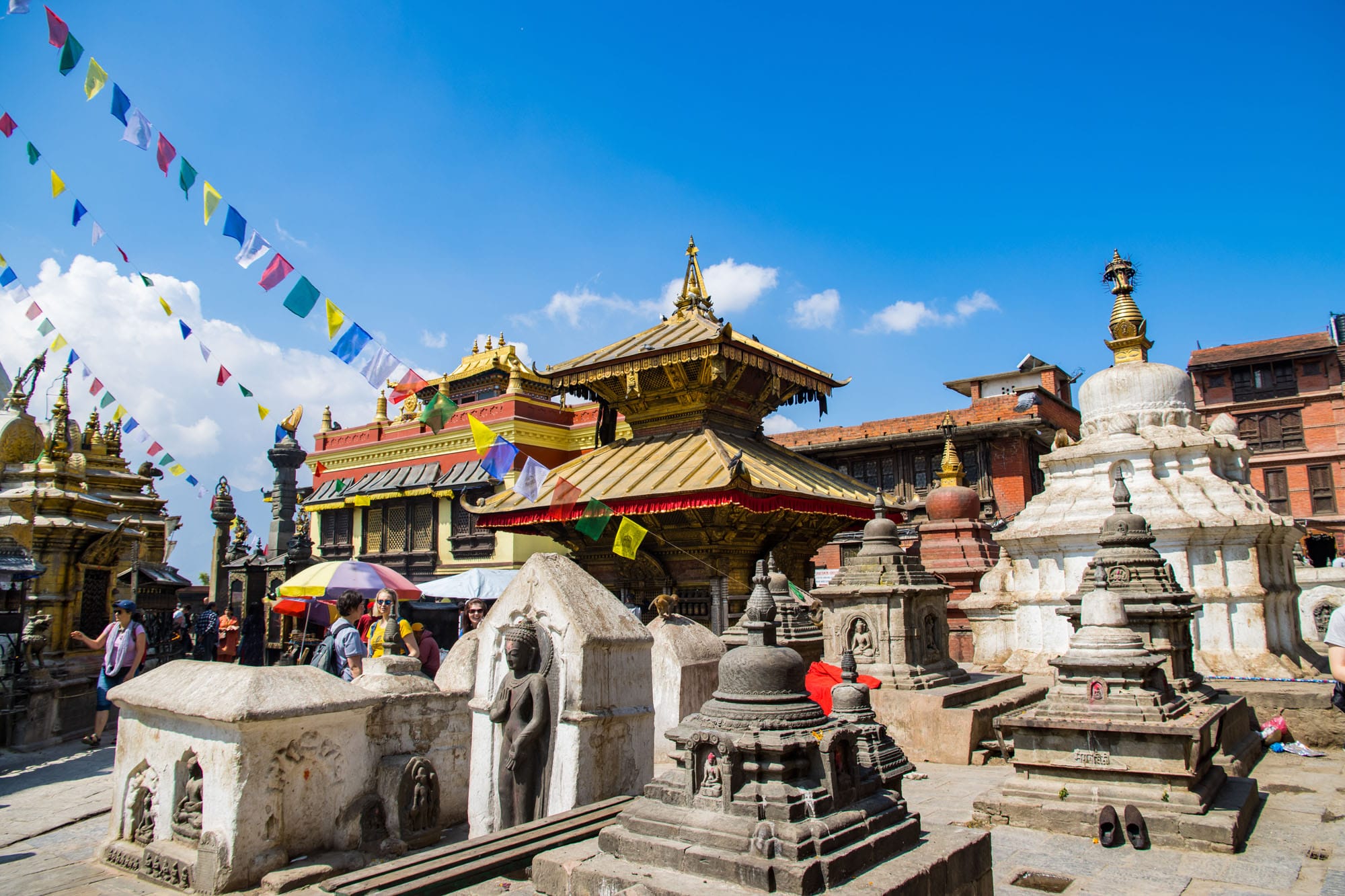Kathmandu Valley Tour – 1 Day
Best Season
Highest Altitude
Trip Overview
Explore the rich cultural heritage and historical landmarks of Kathmandu Valley. Ideal for those with limited time, this Kathmandu Valley Tour offers a journey to the valley’s most iconic sites. Along this tour, you get to delve into Nepal’s vibrant history, architecture, and religious traditions. Explore UNESCO World Heritage Sites, ancient temples, and bustling local markets, all within a single day.
Kathmandu Valley Tour Highlights
- Begin your day at Kathmandu Durbar Square, a UNESCO World Heritage Site that showcases Nepal’s ancient architecture.
- Next, explore the sacred Swayambhunath Stupa, also known as the Monkey Temple, where you can enjoy panoramic views of the valley.
- Continue to Pashupatinath Temple, one of the most significant Hindu temples, to learn about its deep religious significance.
- Marvel at the architectural beauty of Boudhanath Stupa, a key pilgrimage site for Buddhists.
- End your tour with a visit to the vibrant markets of Asan, where you can experience local culture and traditions.
- Throughout the tour, you’ll travel in comfort with a knowledgeable guide who will enrich your experience with insights into each site.
Route Overview
- Start at Kathmandu Durbar Square: Meet your guide and begin your day at Kathmandu Durbar Square, located in the heart of the city. This area is a hub of ancient architecture and culture.
- Visit Swayambhunath Stupa (Monkey Temple): Drive to Swayambhunath, perched atop a hill overlooking Kathmandu. Along the way, climb the steps to the stupa, adorned with prayer flags and spinning prayer wheels, to enjoy panoramic views of the valley.
- Explore Pashupatinath Temple: Head to Pashupatinath, one of the most important Hindu temples, situated on the banks of the Bagmati River. Additionally, observe the temple’s sacred atmosphere and various rituals, including cremation ceremonies performed along the riverbanks.
- Discover Boudhanath Stupa: Continue to Boudhanath Stupa, a key pilgrimage site for Tibetan Buddhists. Walk around the massive stupa, observe the devotees spinning prayer wheels, and explore the surrounding Tibetan monasteries.
- End at Asan Market: Conclude your tour at Asan Market, one of the oldest and busiest markets in Kathmandu. Stroll through the lively streets filled with vendors selling fresh produce, spices, textiles, and handicrafts, providing a glimpse into local life.
- Return to Hotel: After a full day of exploration, return to your hotel, carrying with you the memories of Kathmandu’s vibrant culture and historical treasures.
Significance of Kathmandu Valley
- Kathmandu Valley: The valley is a melting pot of cultures, religions, and history. It is home to seven UNESCO World Heritage Sites, including ancient palaces, temples, and stupas. Overall, valley’s architecture and traditions reflect a unique blend of Hinduism and Buddhism.
Recommended Time to Visit
- The best time to take the Kathmandu Valley Tour is during Autumn (September to November) and Spring (March to May) when the weather is pleasant. Overall, the weather offers clear skies, best views and comfortable temperatures for sightseeing.
Itinerary
Your day begins with a pick-up from your hotel in Kathmandu. After meeting your expert guide, you’ll head out to explore the ancient and culturally rich Kathmandu Valley. As you drive through the vibrant streets of the city, you’ll see the juxtaposition of historical landmarks, bustling markets, and modern life. The Kathmandu Valley is a UNESCO World Heritage Site that encompasses several important cultural and religious sites, which are spread across the city. This tour will offer you a deep dive into the religious and architectural legacy that makes Kathmandu unique, with an introduction to the city’s spiritual heart.
Kathmandu Durbar Square, located at the heart of the city, is an essential part of the Kathmandu Valley tour. This majestic complex served as the royal palace and political center for centuries, and it remains a hub of Nepalese culture and architecture. The square is a treasure trove of ancient temples, courtyards, and monuments. You'll begin your exploration at the Hanuman Dhoka Palace, the former royal residence, and learn about the kings who ruled Nepal for centuries. Don’t miss the intricate wood carvings and stone statues that adorn the temples in the square, such as the Taleju Temple and the Kasthamandap, the structure believed to have been the birthplace of the Kathmandu Valley’s name. You’ll also see the Kal Bhairab temple, dedicated to the fierce form of Lord Shiva, where locals often come to pay homage.
Swayambhunath, also known as the Monkey Temple, is one of Nepal’s most iconic landmarks. Located atop a hill, it is one of the oldest and most important stupas in the country. To reach the stupa, you’ll climb a series of 365 steps lined with monkeys, which gives the site its nickname. As you make your way up, you’ll be greeted by colorful prayer flags fluttering in the wind, adding to the vibrant atmosphere. At the top, the stupa itself features a large golden dome with the eyes of the Buddha painted on all four sides, symbolizing the all-seeing nature of Buddha. From the top, you’ll have panoramic views of Kathmandu Valley, which is especially captivating on clear days. This site also hosts numerous small shrines and Buddha statues, providing a peaceful environment for meditation and reflection.
Next, your journey takes you to Pashupatinath Temple, one of the holiest and most revered temples in the Hindu world. This ancient temple is dedicated to Lord Shiva and is located on the banks of the sacred Bagmati River. As you approach, you’ll see the iconic golden roof and towering pagoda-style architecture that define the temple’s beauty. The temple complex is surrounded by smaller shrines and is a site of pilgrimage for Hindus from around the world. You’ll have the chance to observe the unique rituals, including the cremation ceremonies performed along the riverbanks. Watching the rituals gives insight into the sacredness of life and death in Hinduism. The atmosphere is spiritual, with a mix of chanting, temple bells ringing, and the smell of incense filling the air. If you’re lucky, you may also witness the famous evening Aarti ceremony, where devotees gather to offer prayers to Lord Shiva.
After your visit to Pashupatinath, it’s time for a relaxing lunch in the vibrant Thamel district, a bustling area filled with shops, cafes, and restaurants. Here, you’ll have the opportunity to sample traditional Nepali dishes. You could try a classic plate of dal bhat, consisting of rice, lentil soup, vegetables, and pickles, or savor some flavorful momos (Nepalese dumplings). Thamel offers a variety of options for dining, whether you prefer local Nepali food or international cuisine. During lunch, you’ll have a chance to rest and absorb the atmosphere of one of Kathmandu’s most famous tourist areas, where the energy and excitement of the city come together.
Following lunch, your next stop is Boudhanath Stupa, one of the largest and most revered stupas in the world. It stands as a major pilgrimage site for Tibetan Buddhists, and as you approach, you’ll notice the large, circular structure surrounded by smaller stupas and Tibetan monasteries. The stupa’s immense size, with its towering white dome, makes it an awe-inspiring sight. You’ll walk around the stupa, following the traditional practice of circumambulation, while spinning prayer wheels that line the path. The entire area is filled with a peaceful and spiritual aura, with the scent of butter lamps and incense wafting through the air. The surrounding Tibetan monasteries are home to monks who can often be seen engaged in prayer and chanting. Boudhanath is not only a religious site but also a center of Tibetan culture, offering insight into the traditions and beliefs of the Tibetan people.
To conclude your tour, you’ll visit Asan Market, a lively and vibrant marketplace located near the heart of Kathmandu. Asan is one of the oldest and busiest markets in the city, offering an array of goods ranging from fresh produce, spices, and dried herbs to textiles, jewelry, and handicrafts. The market’s narrow alleyways are filled with the sounds of bargaining and the vibrant colors of goods displayed by local vendors. It’s the perfect place to pick up souvenirs, traditional items, and local spices to take home. Asan is also a great place to observe the daily life of Kathmandu’s residents, with vendors, locals, and tourists all mixing together in the bustling environment. You’ll feel immersed in the local culture as you explore the market’s maze-like lanes, and the energy of the market will leave you with lasting memories of Kathmandu’s vibrant street life.
After a full day of exploring Kathmandu Valley, it’s time to return to your hotel. Your guide will take you back, reflecting on the highlights of the day—Kathmandu’s rich history, the spirituality of its temples, the cultural insights, and the vibrant local life. As you return, you’ll have gained a deeper understanding of the diverse and beautiful aspects of this city, and your memories will undoubtedly be filled with images of ancient temples, bustling streets, and spiritual sites.
Book Now
Send an Inquiry
Got A Question?

Mr. Shishir Dhakal
Price Inclusion
- Private transportation from and to your hotel in Kathmandu
- Guided tour of all listed sites
- Entrance fees to all monuments and sites
- Bottled water
Price Exclusion
- Lunch and any additional meals or snacks
- Personal expenses (e.g., souvenirs, tips)
- Travel insurance
Additional Information
Meals and Accommodation on Kathmandu Valley Tour
Meals: This one-day Kathmandu Valley Tour generally includes a lunch break at a local restaurant where you can enjoy traditional Nepalese cuisine or international dishes as per your preference. Additional meals are not typically provided, but snacks and refreshments can be purchased at various stops throughout the tour.
Accommodation: Since this is a single-day tour, overnight accommodation is not included. However, many visitors stay in nearby hotels within the Thamel area or central Kathmandu, which provide easy access to the pick-up and drop-off locations. Options range from budget guesthouses to luxury hotels, catering to various preferences and budgets.
Best Season for Kathmandu Valley Tour
The ideal times for the Kathmandu Valley Tour are:
- Autumn (September to November): Known for clear skies, mild temperatures, and the best conditions for sightseeing and photography. The festivals during this period add a festive atmosphere to the city.
- Spring (March to May): Pleasant weather with blossoming flowers throughout the valley. Clearer skies and comfortable temperatures make it perfect for outdoor exploration.
Equipment Checklist
Clothing:
- Casual wear: Comfortable clothes for city sightseeing (lightweight shirts, pants, T-shirts).
- Warm layers: Fleece jacket or sweater for cooler mornings and evenings.
- Outer layer: Waterproof jacket and pants (useful during monsoon season).
- Footwear: Comfortable walking shoes for city tours, sturdy shoes for walks in Kathmandu.
- Headwear: Sun hat or cap, warm hat or beanie.
Accessories:
- Sunglasses: With UV protection for bright days.
- Sunscreen and lip balm: Essential for sun protection.
- Daypack: 15-20L for carrying personal items during daily tours.
- Reusable water bottle: 1-2L capacity.
- Personal hygiene items: Toothbrush, toothpaste, wet wipes, quick-dry towel.
Optional:
- Camera and power bank: To capture the scenic views.
- Personal medications: Any prescribed or essential medications.
Frequently Asked Questions(FAQs)
What are the must-visit temples in Kathmandu?
When visiting Kathmandu, there are several temples that shouldn’t be missed. The top must-visit temples include Pashupatinath Temple, a sacred Hindu site, and Boudhanath Stupa, a iconic Buddhist monument. Other notable temples such as Swayambhunath Stupa (Monkey Temple), Kathmandu Durbar Square, Kasthamandap Temple, Jaranath Temple, and Dakshinkali Temple offer a glimpse into Nepal’s rich cultural heritage and spiritual traditions. At Mount Elegance Treks and Expedition, we can help you plan a personalized tour to explore these incredible temples and experience the best of Kathmandu.
Can Mount Elegance Treks arrange accommodation before and after treks?
Yes, we can definitely help you with accommodation arrangements before and after your trek. We have a network of hand-picked hotels, lodges, and tea houses that offer a range of options to suit different budgets and preferences. We can arrange for you to stay in Kathmandu or other cities before your trek, and also book your accommodation in local villages or towns along the way. Our team will work with you to tailor a customized accommodation plan that meets your needs and preferences. We can also provide recommendations and bookings for additional services such as airport transfers, city tours, and sightseeing activities. Just let us know what you’re looking for, and we’ll take care of the rest!
What is Mount Elegance Treks' cancellation policy?
At Mount Elegance Treks, we understand that unexpected circumstances can arise, and we’re committed to being fair and flexible. If you need to cancel your trek, our cancellation policy is as follows: cancellations made 30 days or more prior to the departure date will receive a full refund minus the 20% deposit. Cancellations made between 29 days and 15 days prior to the departure date will receive a 50% refund. Cancellations made 14 days or less prior to the departure date are non-refundable. We also offer the option to transfer your booking to a future trek, subject to availability. We recommend that you purchase travel insurance to cover any unforeseen circumstances that may affect your trip. If you have any questions or concerns about our cancellation policy, please don’t hesitate to contact us!
Does Mount Elegance Treks require a deposit for booking?
Here is a potential answer for the FAQ question:
Does Mount Elegance Treks require a deposit for booking?
Yes, to secure your spot on one of our trekking adventures, a deposit of 20% of the total tour cost is required at the time of booking. This deposit is a non-refundable portion of the total cost, but it ensures your place on the trek. The balance of the payment is due 30 days prior to your trek departure date. By paying the deposit, you’re committing to join us on this amazing adventure, and we’ll send you a confirmation invoice and all the necessary details to get you started. Don’t worry, we’ll guide you through the payment process and answer any questions you may have!
What payment methods does Mount Elegance Treks accept?
Here is a potential answer for the FAQ question:
What payment methods does Mount Elegance Treks accept?
At Mount Elegance Treks, we offer a range of payment options to make booking your trek as convenient as possible. We accept bank transfers, credit card payments (including Visa, Mastercard, and American Express), and online payments through our website. We also accept payment through PayPal. For bookings, a deposit of 20% is required to secure your spot, with the balance due 30 days prior to your trek departure date. Our payment process is secure and transparent, and we’ll provide you with a detailed invoice and payment instructions once you’ve booked your trek. If you have any questions or concerns about payment, feel free to contact us!
How much does a taxi cost in Kathmandu?
The cost of a taxi in Kathmandu varies depending on the distance, traffic, and type of taxi. Our team at Mount Elegance Treks and Expedition provides the following estimated fares as a general guideline:
Metered Taxi: The fare starts from NPR 200 (approximately USD 1.80) and increases by NPR 10-15 (approximately USD 0.09) per kilometer.
Non-Metered Taxi: The fare is usually negotiated at the start of the journey, with prices ranging from NPR 500-1,000 (approximately USD 4.50-9) for short distances.
Tourist Taxi: These taxis are specifically designed for tourists and have fixed rates, ranging from NPR 1,000-2,000 (approximately USD 9-18) for a one-way journey.
To avoid any confusion, we recommend:
Using a metered taxi for a fair and transparent fare.
Agreeing on the fare before starting your journey with a non-metered taxi.
Asking your hotel or tour operator for recommendations on reliable taxi services.
Our team can also arrange for a private car and driver for the day, which can be a convenient and hassle-free option. We’ll be happy to provide more information and assistance with your transportation needs in Kathmandu.
What is the best way to get around Kathmandu?
Kathmandu is a bustling city with a mix of modern and traditional transportation options. Our team at Mount Elegance Treks and Expedition recommends the following ways to get around Kathmandu:
Taxi: Taxis are readily available and can be hired from the street or booked in advance. Make sure to agree on the fare before you start your journey.
Rickshaw: Rickshaws are a fun and affordable way to explore the city, but be prepared for a bumpy ride.
Metered Taxi: Kathmandu has introduced a metered taxi system, making it easier to agree on a fare.
Private Car and Driver: We can arrange for a private car and driver for the day, which is a convenient and hassle-free option.
Public Transportation: Kathmandu has a reliable bus and microbus system, which is an affordable way to get around the city.
Walking: Kathmandu is a walkable city, and exploring on foot is a great way to discover its hidden gems.
To avoid traffic congestion and parking issues, we recommend avoiding traveling during peak hours (7-9 am and 4-7 pm) if possible. Our team can also provide guidance on the best routes and transportation options to suit your needs and preferences.
Where are the best places to shop in Kathmandu?
Kathmandu is a shopper’s paradise, with a wide range of markets and streets offering everything from traditional handicrafts to modern boutiques. Thamel is a must-visit destination, with its vibrant streets lined with shops, markets, and stalls selling everything from souvenirs to clothing to trekking gear. Other popular shopping spots include the Asan Market, the New Road, and the Bhaktapur Durbar Square, which offer a glimpse into Nepal’s rich cultural heritage and traditional craftsmanship. Our team at Mount Elegance Treks and Expedition can provide recommendations and insider tips on the best places to shop, from local artisans and markets to high-end boutiques, to help you find the perfect souvenirs and treasures to take home.
Where can I try authentic Nepali food in Kathmandu?
Looking to indulge in the flavors of Nepal? You can find authentic Nepali cuisine in various restaurants and eateries throughout Kathmandu. Thamel is a great place to start, with many local restaurants serving traditional dishes like dal bhat, momos, and selewals. Some popular spots include Durbar Restaurant and Jal Vihar Restaurant. Our team at Mount Elegance Treks and Expedition would be happy to provide more recommendations and insider tips on where to find the best Nepali cuisine during your stay in Kathmandu.
Can tourists enter all areas of Kathmandu Durbar Square?
While Kathmandu Durbar Square is a largely accessible attraction, not all areas are open to tourists. The square is a UNESCO World Heritage Site and a significant cultural hub, with some areas reserved for religious or administrative purposes. Certain sections, such as the Royal Palace and certain temples, may be restricted or require special permission to enter. However, the main courtyard and many of the famous temples, including the Kasthamandap and the Basantapur Museum, are open to visitors. At Mount Elegance Treks and Expedition, we can provide you with a guided tour of Kathmandu Durbar Square, ensuring that you make the most of your visit and gain a deeper understanding of the site’s history, culture, and significance.
What is the history of Swayambhunath (Monkey Temple)?
Swayambhunath, or the Monkey Temple, is a 2,000-year-old Buddhist stupa with a rich and storied history. The site is believed to have been established in the 5th century AD, emerging from a lotus flower that blossomed in a lake. Over the centuries, the stupa has been rebuilt and expanded by various dynasties and cultures, incorporating unique architectural styles and Buddhist traditions. As a UNESCO World Heritage Site, Swayambhunath is now one of Kathmandu’s most famous attractions, known for its stunning white stupa, colorful prayer flags, and resident troop of mischievous rhesus macaques. At Mount Elegance Treks and Expedition, we’d be happy to share the fascinating history and cultural significance of Swayambhunath with you, offering a deeper understanding and appreciation of this incredible monument.
How do I visit Boudhanath Stupa?
Visiting Boudhanath Stupa is a straightforward and rewarding experience. Located in the heart of Kathmandu, the stupa is easily accessible by taxi or on foot. We recommend arriving early in the morning or late in the afternoon to avoid the crowds. As a UNESCO World Heritage Site, the stupa is open to visitors of all faiths, and entrance is free. However, it’s considered polite to dress modestly and remove your shoes when entering the stupa premises. At Mount Elegance Treks and Expedition, we can help you plan a guided tour to Boudhanath Stupa, providing insight into its rich history, culture, and spiritual significance.
What is the significance of Pashupatinath Temple?
Pashupatinath Temple is one of the most revered Hindu sites in Nepal, holding profound religious and cultural significance. As a UNESCO World Heritage Site, this ancient temple complex is dedicated to Lord Shiva, considered the destroyer of evil and the transformer of the universe. The temple is not only a sacred site for Hindus, but also a symbol of Nepal’s rich spiritual heritage, attracting thousands of pilgrims and tourists alike. At Mount Elegance Treks and Expedition, we highly recommend a visit to Pashupatinath Temple as a quintessential part of your Nepalese journey, offering a unique glimpse into the country’s deeply rooted religiosity and traditions.
Does Mount Elegance Treks arrange domestic flights?
Yes, we can arrange domestic flights for you if needed. For treks that require flights, such as to and from Lukla for the Everest Base Camp trek or to Jomsom for the Annapurna Circuit trek, we can book your flights in advance. We have established relationships with reputable airlines and can ensure that you receive the best available flights. We’ll also handle any necessary flight changes or cancellations, so you can focus on preparing for your adventure. Just let us know if you need domestic flights, and we’ll take care of the arrangements.
Experiences That Last a Lifetime
Verified Fantastic Annapurna Base Camp Trek Everything was perfectly organized, down to the last detail. Everything ran smoothly and was very well planned. The care and company were absolutely lovely 🙂 it was amazing time. 9 days of trekking with breathtaking views, delicious food along the way, and amazing guides.On top of that, I ended up in the hospital because of appendicitis, and I was never alone — the organizers surrounded me with exceptional care. Thank you Shishir 🙏🏻Verified Very amazing. Very beautiful places. Breathtaking views and the guide @ Mr. Santosh, very nice and amazing talent.The food and culture was purely loss of words to us. Thank you.Verified Najpiękniejsze góry świata, cudowny magiczny czas. Wspaniale doświadczenie, doskonała organizacja, przemili przewodnicy i porterzy, zawsze gotowi pomóc i wesprzeć radą. Wyprawa którą na zawsze pozostanie w moim sercu.Doznania których nie sposób doświadczyć nie biorąc udziału w tej wyprawie. Z pewnością polecę udział w tej przygodzie moim przyjaciołom.Verified Annapurna circuit, Nar Poo trek, Mardi himal, etc This company manages the entire process very responsibly and leads the contract in detail, very kindly and reliably. Finally all costs are more reasonable than other companiesVerified Mr tourism "I had an incredible experience with Mouth elegance during my Mr. Tourism journey! Their professionalism, expert guidance, and warm hospitality made every trek seamless and unforgettable. Highly recommended for anyone looking to explore Nepal’s breathtaking landscapes!"Verified Annapurna Rounding/Punhill.abc Dream-like sea trip February 13 Annapurna Rounding/Punhill.abcTrekkingMeeting with the president and guide Ray at Tammel Hotel...Knowing everything about travel Thank you for moving forward...I was able to leave the trekking. Thank you.Without completing a journey of 20 days With the hard work of well-led Ray GaidenWe had a comfortable and enjoyable trip.Thank you for the careful care of the local travel agent.I wish to visit again next time.We wish the unlimited development of the travel company.Verified The most wonderful and satisying Trek with the best team b I had the most amazing trip. I had been to Poonhill trek ! Thanks to Mr Shishir Dhakal, and Mount Elegance, such a supportive guy ! Without your help, i may not have such good trip ! my best memory of life !


